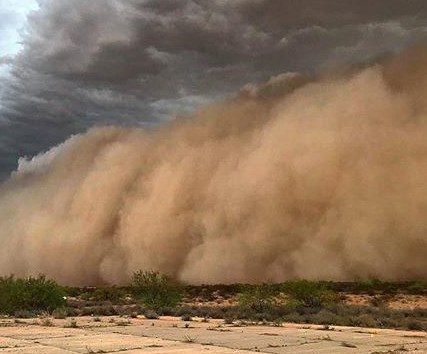Iraq Dust Storms
In the last six weeks, around eight dust storms hit Iraq. NASA’s satellites captured the images of skies turning orange. These dust storms reduce visibility, increase the risk of accidents, give rise to respiratory problems, and severely disrupt lives.
Which winds are driving the dust storms?
The dust storms are driven by northwesterly winds, also known as Shamal. These winds lift the dust from the Tigris-Euphrates basin of Syria and Iraq and transport it to the Persian Gulf and Arabian Peninsula. Dust storms strike West Asia every summer and winter. However, in recent years, the intensity and frequency of dust storms have increased.
What is the role of La Nina?
La Niña is a climate pattern that impacts weather phenomena globally. When there is La Niña, it will result in dry winter. The soil loses moisture and the dry sand will be easily lifted into the air, giving rise to dust storms. La Niña has been there for the last two years and it is expected that it will continue this year as well. La Nina also influences hurricane season and increases the chances of drought.
How climate change affects dust storms?
It is widely believed that climate change could be the reason behind increasing the frequency and intensity of dust storms. Climate change is giving rise to long-term changes in air temperature, rainfall, wind speed, etc. which are fuelling the dust storms. Other changes in the ecosystem such as land degradation and desertification are also responsible for dust storms.
What is the impact on India?
These dust storms travel from west Asia and enter India either through land or the Arabian Sea. Dust from the Arabian Peninsula affects Rajasthan and also sometimes Gujarat. The dust even reaches the Himalayas and Indo-Gangetic plains, depending on meteorological conditions. Some studies show that dust from west Asia impacts India’s monsoon patterns and can also cause heat waves during the summer.
What dust storms are dangerous?
Dust storms transport various pollutants like Pesticides, Heavy metals, Biological components (bacteria, fungi, and spores), pollen, etc. The dust also settles on the Himalayan glaciers, reducing their albedo, thereby hastening their melting. Over the Indo-Gangetic Plains, the dust mixes with the anthropogenic emissions and impacts the energy budget.
Month: Current Affairs - May, 2022
Category: Environment Current Affairs


